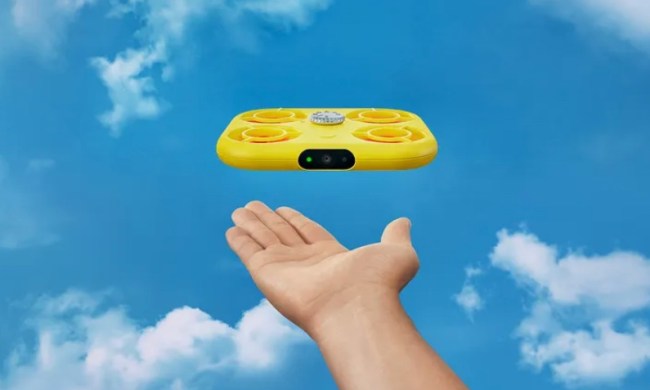A drone has helped botanists in Hawaii to find a flower that they thought was extinct.
Hibiscadelphus woodii, to give it its official name, was recently rediscovered growing on a vertical cliff face in a remote part of Kalalau Valley on the Hawaiian island of Kauai.
Inaccessible on foot because of its challenging topography, researchers from the National Tropical Botanical Garden (NTBG) turned to drone technology to explore the biodiversity hotspot. In video footage (above) captured by the remotely controlled copter, the plant is pointed out at the 1-minute mark.
Ben Nyberg, the NTBG drone specialist who made the discovery, said, “Drones are unlocking a treasure trove of unexplored cliff habitat, and while this may be the first discovery of its kind, I am sure it won’t be the last.”
H. woodii is described as a rare plant that “grows as a shrub or small tree and produces bright yellow flowers that turn purplish-maroon as they age. The nectar-rich flowers are likely pollinated by native honeycreeper birds including the amakihi.”

The NTBG explains that, like other endangered native Hawaiian species, H. woodii is under threat from invasive plants, introduced animals, and natural events on the cliff face such as rock slides, something that destroyed the last known colony of H. woodii in the late 1990s — less than 10 years after it was first discovered by NTBG botanist Ken Wood.
Before drone technology became widely accessible, Wood would spend some of his time “rappelling down cliffs on Kauai and hanging out of helicopters” as he searched for rare plant species growing on the island, according to a report by Quartz.
During the expedition that led to the rediscovery of H. woodii, Wood and Nyberg had hiked hundreds of feet down the Kalalau Valley cliffs, but the difficult terrain prevented them from going any further.
It was then that Nyberg deployed the drone, flying it further down the cliffs, toward the sea, to take a closer look at a specific area of interest. Able to get within a meter or two of the sheer cliff face, he was able to confirm the continued existence of H. woodii.
Nyberg suggested this could be the first time a drone has been used to find a species of plant that everyone believed had long gone. And now there could be even more exciting discoveries on the way as the team plans to increase its drone activity to explore other parts of the valley that up to now have been impossible to reach.


